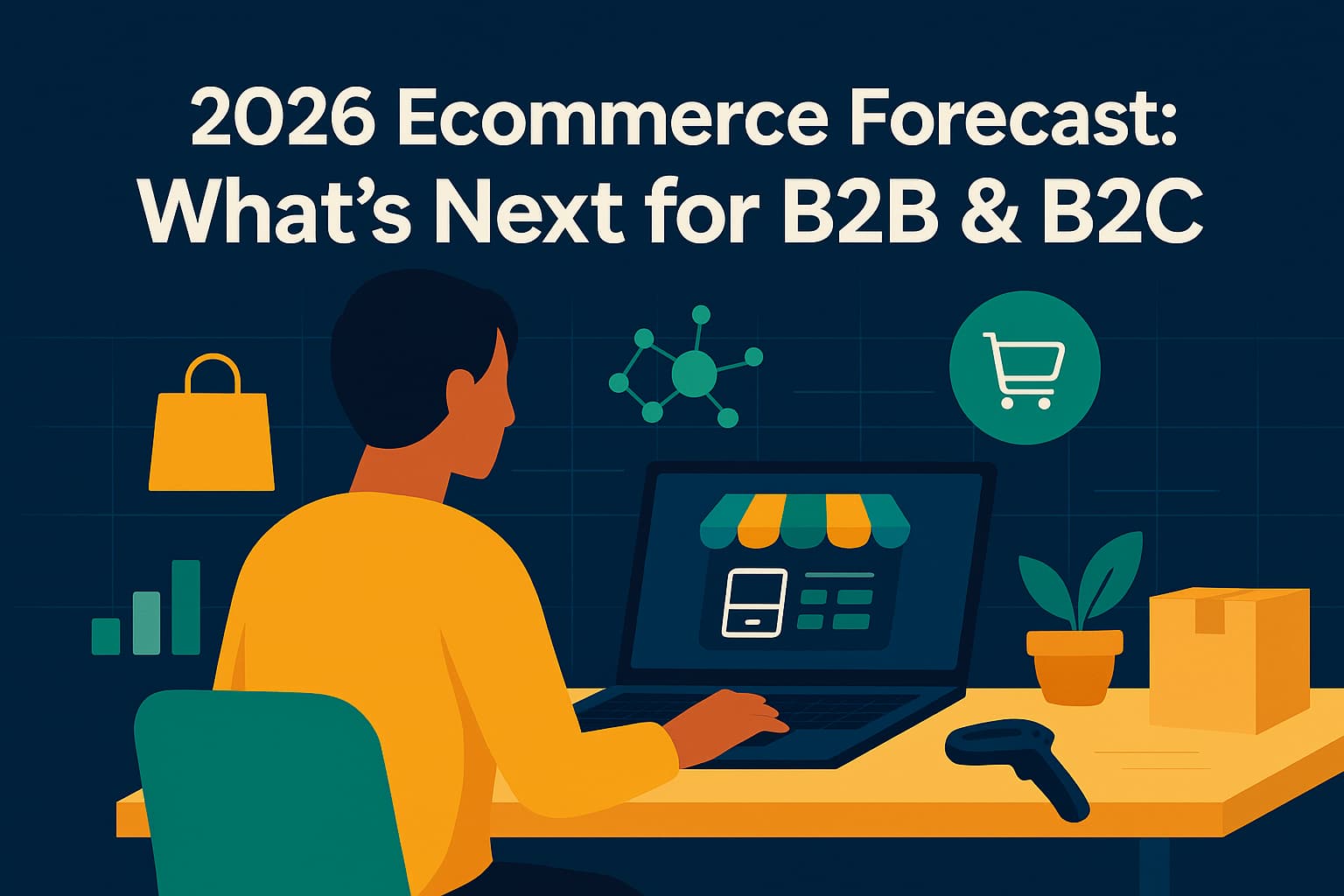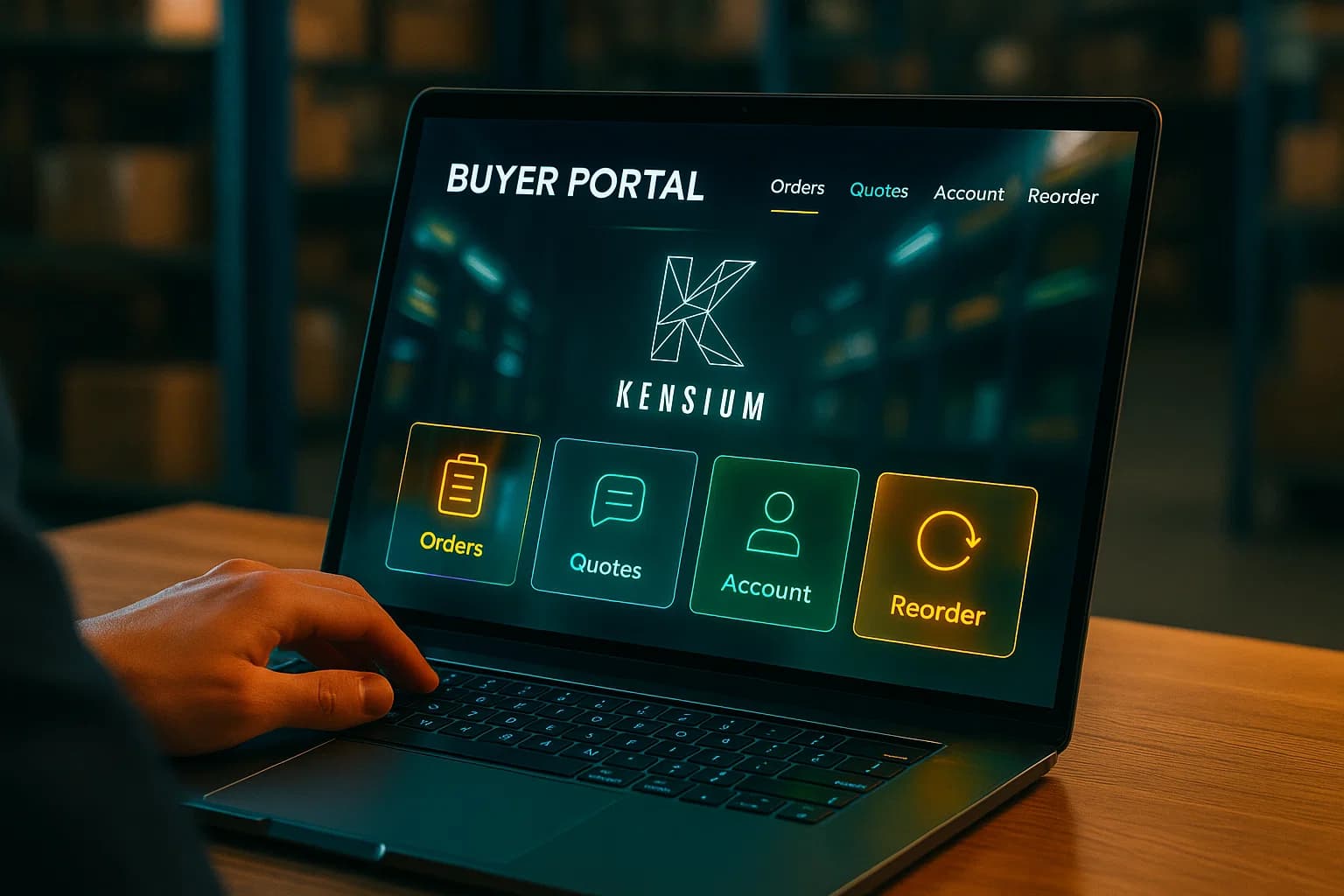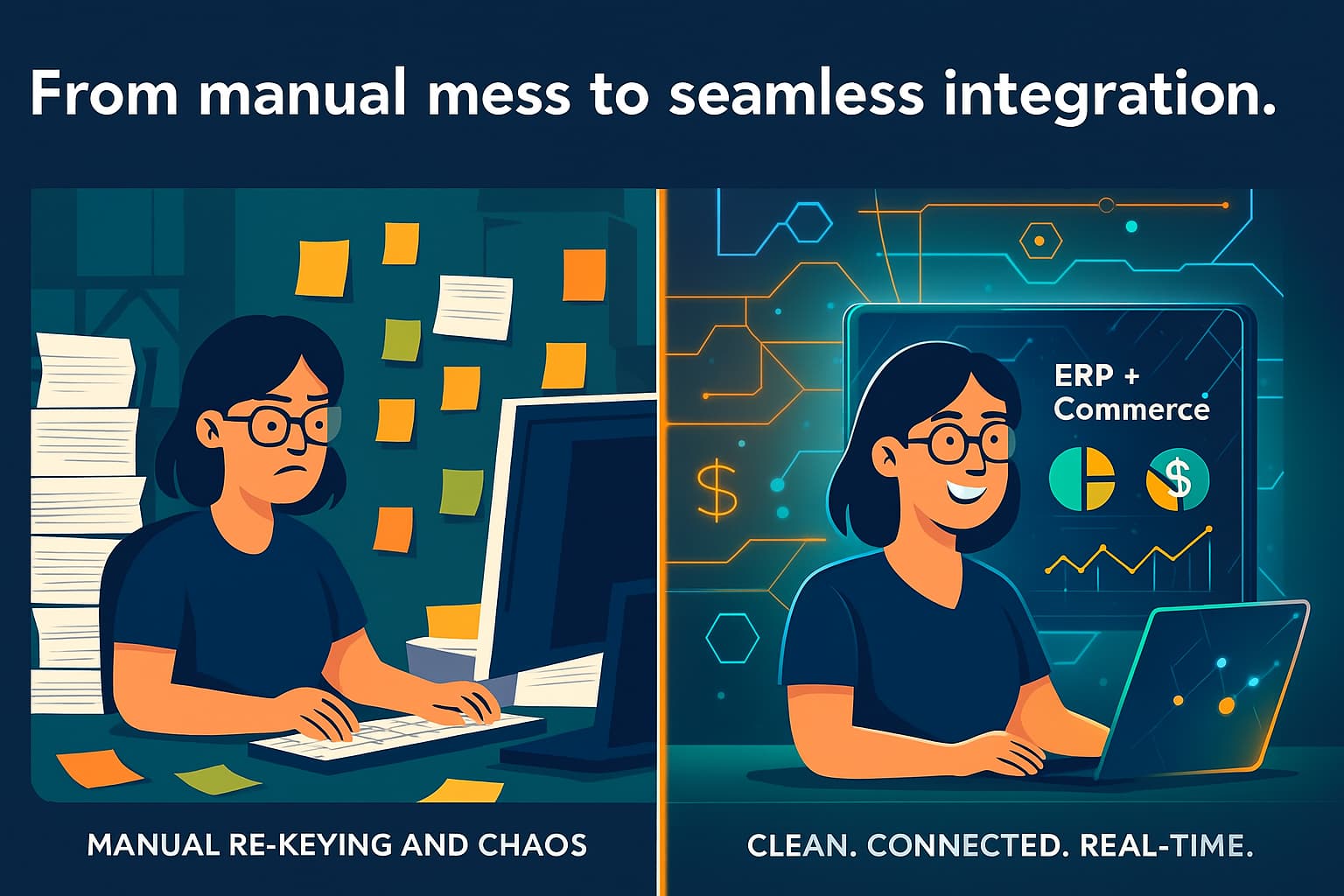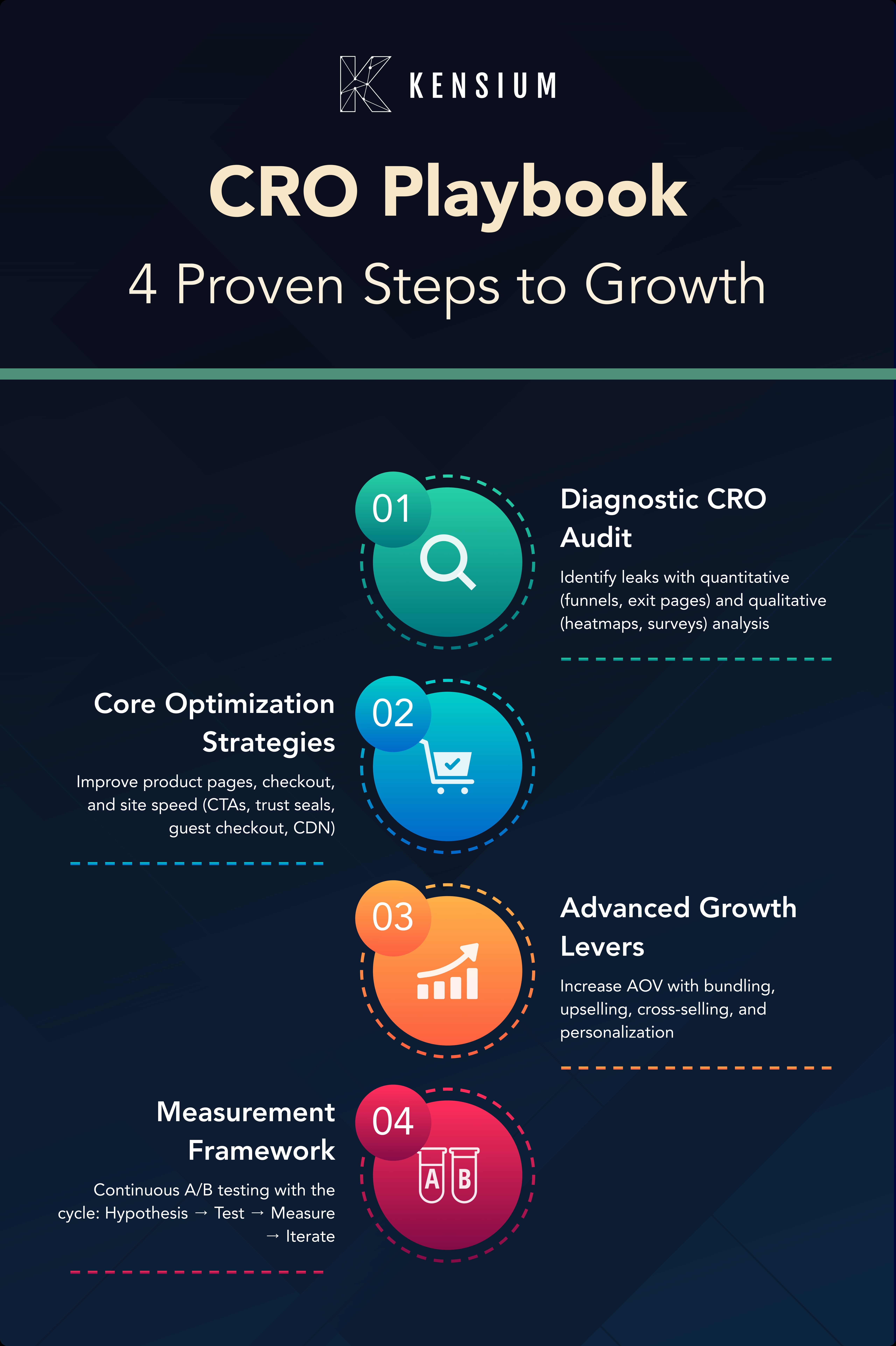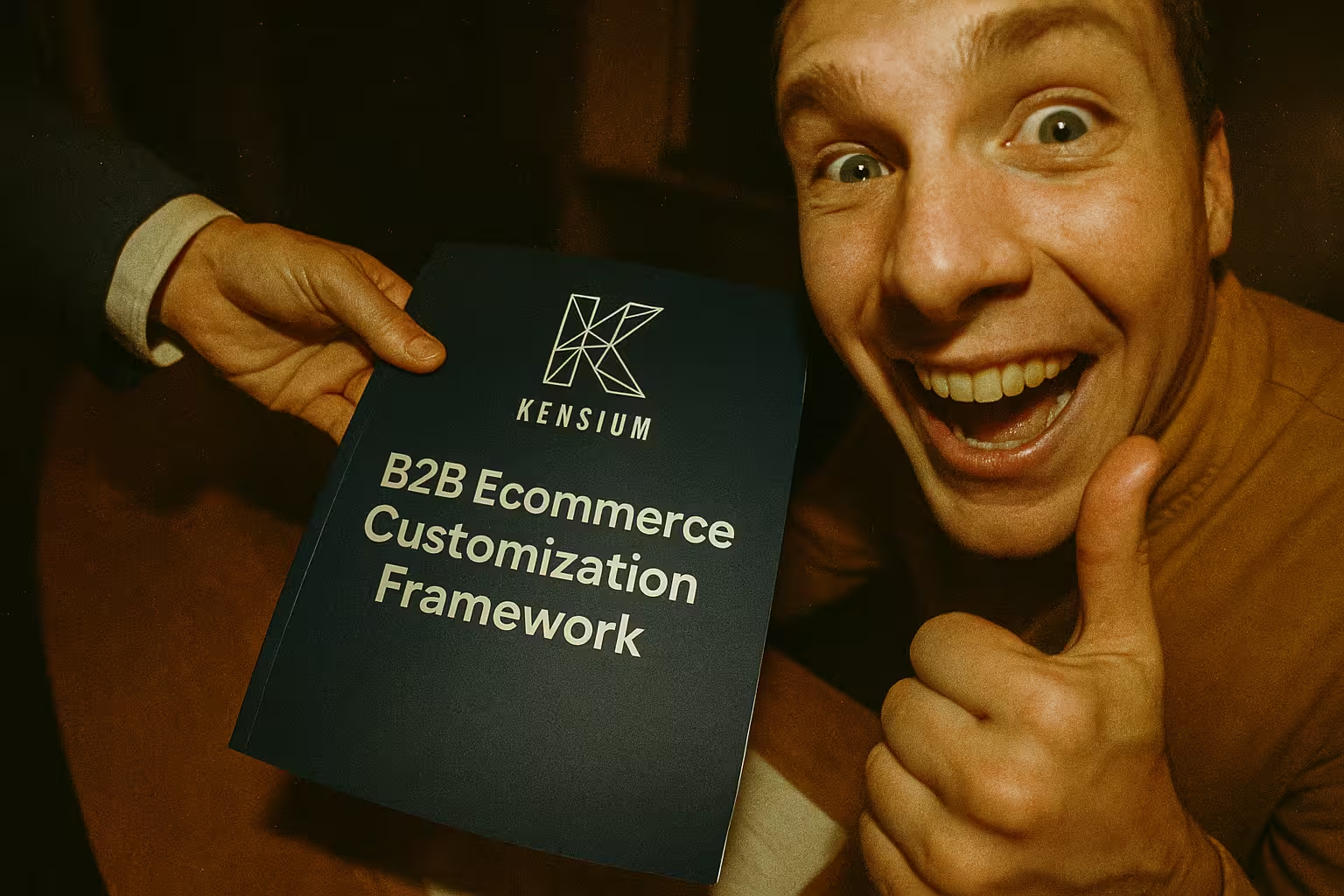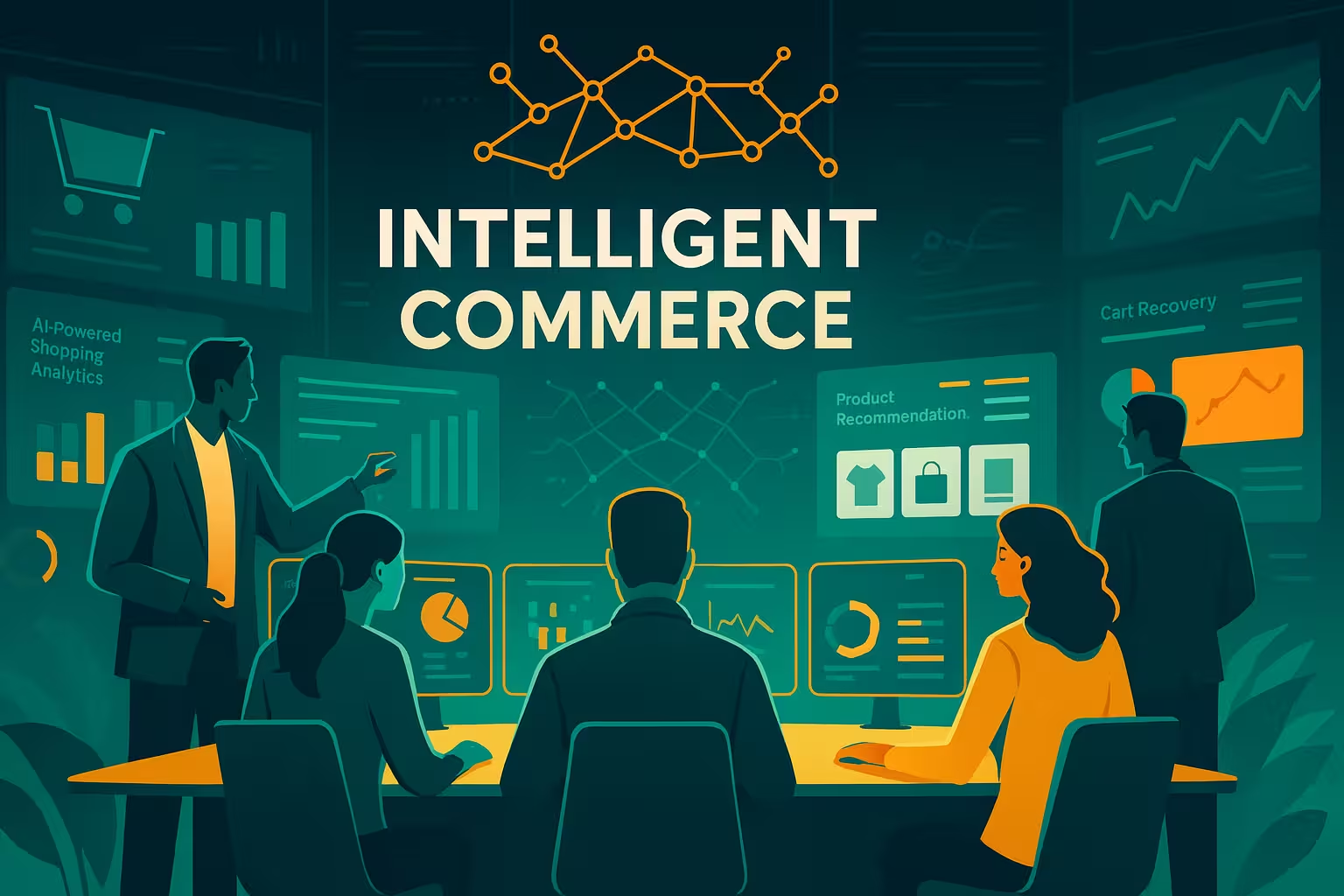
In the digital commerce space, user experience (UX) isn’t just a “nice to have” anymore — it’s a dealbreaker. Direct-to-consumer (D2C) brands have raised the bar with sleek, personalized, intuitive interfaces, while many B2B ecommerce sites feel stuck in time. Outdated designs, clunky navigation, and overly complex processes are not only frustrating customers but actively costing sales. At Kensium, we believe B2B merchants deserve better, and we’re bridging that UX gap with modern, customer-centric solutions to help you catch up to the D2C standard.
The B2B UX Gap Is Real
Today’s B2B platforms too often resemble early 2000s websites – think mandatory login walls, PDF catalogs, and convoluted quote forms – instead of the seamless storefronts buyers experience elsewhere. The result? Frustration that drives would-be customers away. In fact, 85% of B2B buyers report frustrating experiences when trying to purchase online procurementmag.com. Common pain points include unclear stock levels, pricing discrepancies, and clunky checkout steps. Only 19% of buyers feel that current B2B websites meet their expectations procurementmag.com – a stunning indictment of how far behind many B2B sites are. It’s no surprise that 75% of buyers say they would switch to a competitor if a supplier’s online experience isn’t keeping up procurementmag.com. Simply put, if your B2B store is hard to use, your customers will find one that isn’t.
The gap is evident in buyer feedback. A Gartner survey found 77% of B2B buyers felt their latest purchase was difficult – these buyers have grown impatient with inefficient, unintuitive systems shopify.com. From excessive form-filling to multi-page checkouts, every extra hurdle in the user journey is an opportunity for abandonment. B2B buyers will no longer “put up” with poor UX just because it’s work-related; they expect the same ease they get on consumer sites and will abandon clunky platforms for those with superior technology shopify.com. The message is clear: leveling up your UX is not optional if you want to stay in the consideration set.
The New B2B Buyer: Digitally Native, Impatient, and Empowered
B2B buyer demographics have shifted dramatically. Millennials and Gen Z professionals now comprise the majority of B2B buyers – roughly 71% to 73% of procurement decision makers are under 45 digitalcommerce360.comprocurementmag.com. These digitally native buyers grew up with Google, Amazon, and mobile apps, and they demand the same convenience at work that they enjoy as consumers. “Millennials have grown up in a world of instant information and seamless online experiences,” notes Greg Coticchia, CEO of Sopheon. “They expect B2B interactions to be as intuitive and convenient as their personal shopping experiences. If companies can’t deliver that, they risk being eliminated from consideration before they even realize it.” digitalcommerce360.com
Unlike the old guard who might tolerate outdated processes, today’s buyers are independent and impatient. They prefer to research and transact on their own terms instead of relying on sales reps. Salesforce found that 68% of millennial B2B buyers prefer self-service research tools over speaking to a salesperson, and many complete up to 70% of the buying process online before ever engaging a supplier digitalcommerce360.com. They value transparency and speed – real-time pricing, instant stock visibility, peer reviews – and won’t hesitate to drop a vendor whose website makes life difficult. As Salesforce put it, “Millennials want independence and transparency at every stage of the buying journey. Companies that fail to provide seamless online research and transaction capabilities will fall behind.” digitalcommerce360.com
Crucially, these younger B2B customers are bringing B2C expectations into B2B. They’ve been conditioned by Amazon’s one-click ordering, Uber’s on-demand convenience, and Netflix’s personalized recommendations. Gartner predicts that by 2026, 80% of B2B sales interactions will happen via digital channels (ecommerce sites, chat, marketplaces) rather than traditional in-person or phone sales digitalcommerce360.com. In other words, the primary “salesperson” for many accounts will be your website. Is yours ready for that responsibility?
What D2C Brands Can Teach B2B
Digital-native D2C brands obsess over the customer journey, and B2B merchants should take note: exceptional UX isn’t just for retail – it’s a growth strategy. The best D2C sites prioritize storytelling, visual appeal, and effortless navigation at every step. Every click, form, and page is optimized to reduce friction and delight the user. Think about how easy it is to shop on popular consumer sites: rich product images and videos, intelligent product recommendations, smooth checkout, and proactive customer support. These companies invest heavily in UX/UI design because it directly drives conversions and loyalty.
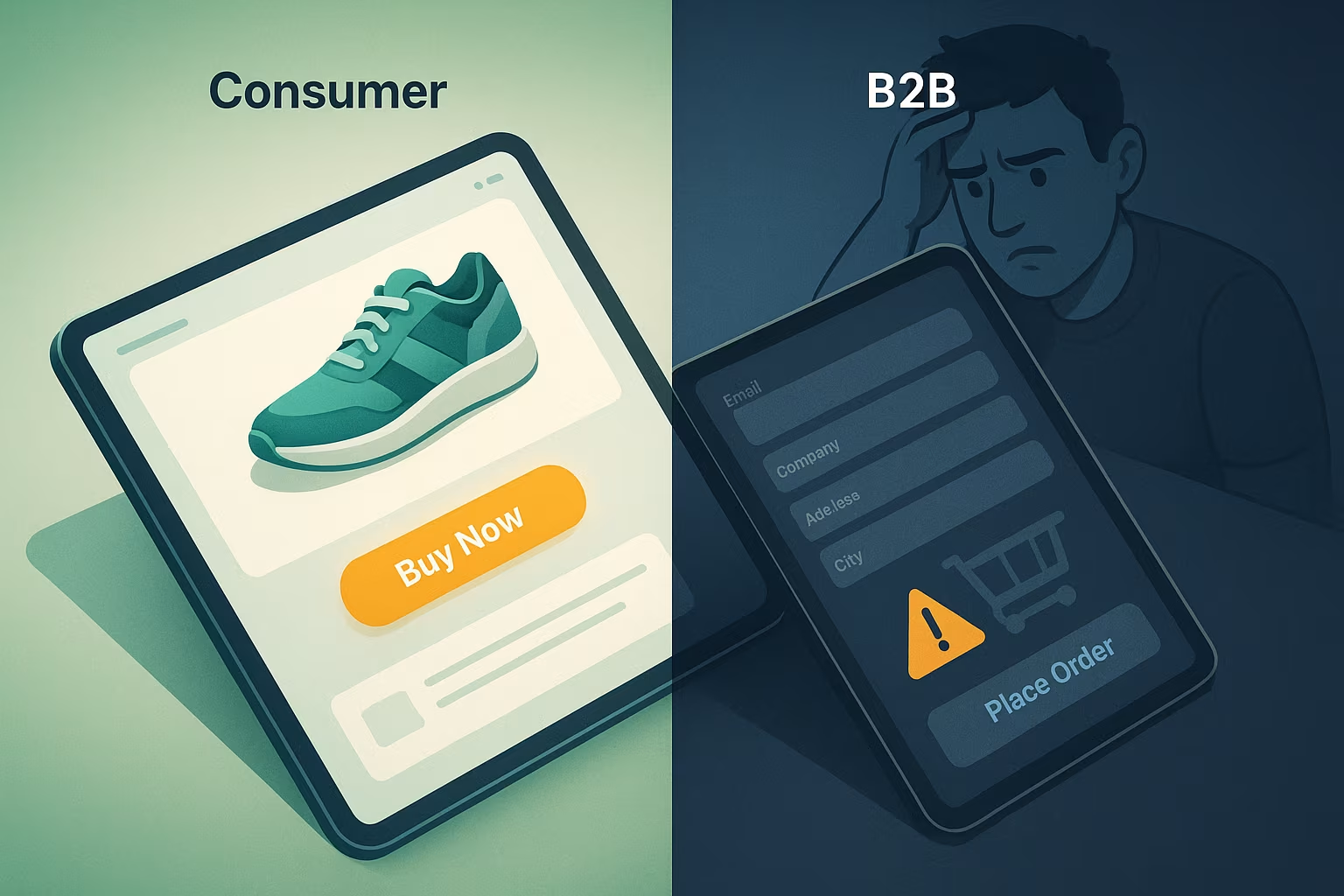
B2B companies can no longer dismiss this as irrelevant to “professional” buyers. After all, 80% of B2B buyers now expect a purchasing experience like a B2C customer businesswire.com. They want sites that look good, load fast, and guide them intuitively to what they need. Companies that deliver consumer-grade usability in B2B are reaping the rewards. Studies show that businesses investing in customer experience can see significantly higher revenue growth and retention rates compared to those that don’t onramp.us. In other words, better UX = better ROI.
It’s not just about aesthetics; it’s about ease and efficiency. D2C leaders like Amazon have set a benchmark: if it takes more than a few clicks to find and buy a product, it’s too many. B2B buyers, being consumers themselves, have no patience for cumbersome workflows. As one industry analysis noted, “B2B consumers are accustomed to simple, one-click buying habits in their own lives and expect this same simplicity... in their enterprise buying” supplychaindigital.com. The bottom line: B2B brands that embrace D2C-level UX will gain a serious competitive edge, while those that ignore it risk losing customers to more agile rivals.
Personalization Matters in B2B, Too
Personalization isn’t just a B2C buzzword; B2B buyers crave it as well. From tailored product catalogs and customer-specific pricing to AI-driven product recommendations, personalized experiences make buyers feel valued and make large catalogs manageable. Generic, one-size-fits-all content is a turn-off – 74% of customers (across B2C and B2B) get frustrated by content that isn’t relevant to them sendtrumpet.com. It stands to reason: a tech procurement manager in healthcare should see the products and pricing relevant to her company, not a generic list meant for anyone and everyone.
In fact, over 80% of B2B buyers want a buying experience that mirrors B2C in its level of personalization and ease businesswire.com. And according to one survey, 94% of B2B decision-makers consider personalization critical to achieving their business objectives sendtrumpet.com. Kensium helps B2B clients leverage the same tools used in consumer ecommerce – from segmentation rules to recommendation engines – so that when your customers log in, they feel recognized. Whether it’s showing the right products (and hiding irrelevant ones), offering dynamic pricing for different customer tiers, or suggesting helpful add-ons based on order history, personalization drives engagement and loyalty. (Not to mention, smart personalization engines can lift profits by as much as 15% according to research sendtrumpet.com.)
The takeaway: B2B buyers are people, and people respond to personal touches. If your online store treats every visitor the same, you’re missing an opportunity. A distributor using Kensium’s solutions can greet a repeat customer with, for example, “Welcome back, Jane – ready to reorder product X?” and surface her contract pricing automatically. These little touches can turn a tedious procurement task into a quick, almost enjoyable experience. And that translates into repeat sales.
Let’s Talk Checkout – Fast, Frictionless, and Flexible
One area where B2B often struggles is checkout. Why should a loyal B2B customer have to call someone or email a purchase order just to place a routine order? If D2C brands can offer instant, card-on-file purchases, B2B buyers wonder, “Why can’t I do the same?” The truth is they can – and they will gravitate toward suppliers who enable it. B2B buyers have lost all tolerance for 10-click checkout paths or clunky quote request processes shopify.com. They expect to add to cart, choose payment terms, and place orders in minutes, not days. If your site makes that hard, many buyers will simply find an alternative supplier who offers a smoother path.
A modern B2B checkout needs to support the complexity under the hood (bulk quantities, MOQs, multiple ship-to locations, PO numbers, etc.) without making the user feel that complexity. Kensium designs streamlined checkout flows that are as straightforward as any retail site, but built to handle B2B needs. That means:
- Flexible payment options – let buyers pay by credit card, terms, or PO number, as their account allows.
- Negotiated pricing and volume discounts applied – customers see their custom pricing reflected in cart automatically.
- Quick order and re-order features – for buyers who know SKUs or want to repeat past orders, we provide shortcuts to add items in bulk or duplicate a previous purchase with one click.
- Guest checkout or express checkout – not every B2B transaction needs an obstacle like forcing account creation. For low-friction sales (especially first-time purchases or B2B “impulse” buys), a fast guest checkout can increase conversion.
The goal is zero friction. A buyer shouldn’t have to pick up a phone unless they want to. In fact, nearly half of all business purchases are now completed through self-service online – via vendor websites or marketplaces – without any salesperson involved shopify.com. And that figure is growing every year. By designing checkouts that assume self-service as the default, Kensium helps you capture those orders that would otherwise slip away. The reward for a fast, easy checkout? Happier customers, fewer abandoned carts, and more completed sales.
Mobile-First Is No Longer Optional
Take a hard look at your B2B site on a phone. Does it offer the same ease of use as on desktop, or is it a shrunken, hard-to-navigate afterthought? For many, sadly it’s the latter. In 2025, this is a major mistake. 80% of B2B buyers use mobile devices at some stage of their buying journey sellerscommerce.com – whether it’s researching products on a tablet, checking an order status on their phone, or even placing orders via a mobile app in the field. If your site isn’t fully responsive and optimized for touch, you’re effectively shutting the door on a huge chunk of potential usage.
Consider this: 90% of B2B buyers who have a positive mobile experience say they’re likely to reorder from the same vendor, whereas only 50% would do so after a poor mobile experience sellerscommerce.com. That’s a massive delta, driven purely by mobile UX. Kensium ensures every solution we deliver is mobile-first – not just “mobile-friendly.” We design and test the experience starting with the smallest screens, simplifying menus, forms, and buttons for easy tapping and scrolling. We prioritize page load speed (critical on mobile networks) and ensure important data (like inventory availability or account info) is readily accessible on a handheld screen.
For B2B use cases, mobile can be a game-changer. Picture a contractor on a job site ordering supplies from their phone, or a restaurant manager reordering inventory from a tablet in the storeroom. These scenarios are happening daily. If your site looks like a squished version of a desktop app, those users will be frustrated. We fix that by bringing B2B up to modern responsive standards. The payoff is not just user satisfaction, but incremental revenue – allowing customers to do business with you anytime, anywhere. In short, mobile is no longer optional; it’s foundational.
Intelligent Search and Filter Functions
B2B catalogs are often massive, with hundreds or thousands of SKUs across technical categories. That makes search and navigation critical. If a buyer can’t quickly find the exact widget or part number they need, they might give up (or worse, go to a competitor’s site). Unfortunately, many B2B sites have old-school search that only matches exact text or SKU codes, leading to dead-ends and “no results” frustration. In a recent study, 36% of B2B buyers said they struggle to find products online, causing delays in purchasing procurementmag.com. That’s a huge chunk of users essentially saying “I couldn’t find what I was looking for.”
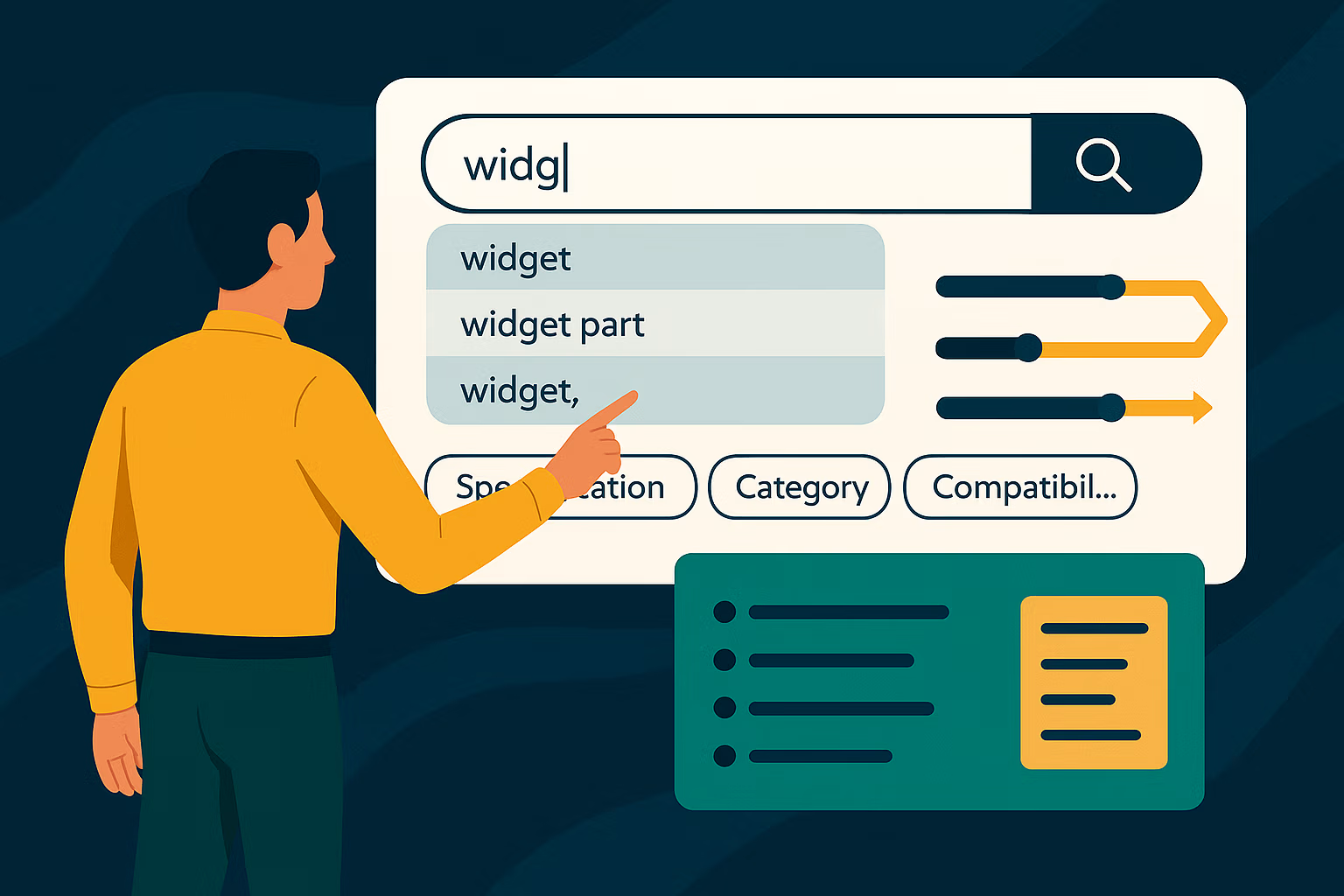
Kensium tackles this by deploying advanced, AI-powered search tools. Features like auto-suggest and autocomplete help guide users as they type (catching spelling errors or offering likely product matches). We enable robust filtering by attributes (specs, size, compatibility, etc.), so once buyers are in a category, they can narrow down to exactly the sub-set of products they need. Breadcrumbs and clear category hierarchies prevent users from feeling lost in a maze of products. The result is a shift from frustration to discovery: a well-designed search can even introduce customers to products they didn’t realize you carry.
Additionally, we can implement saved searches or custom catalogs for frequent buyers. For example, perhaps a client regularly buys only “Category A” products – we can make it easy for them to search within just that subset. The goal is to minimize the time and clicks it takes for a customer to go from “I have a need” to “I found the solution.” By turning search into a strong point, you reduce support calls (“Hey, do you carry X part?”) and speed up the sales cycle. In short, intelligent search is like a skilled digital sales rep who never sleeps – guiding each buyer swiftly to the right products.
Real-Time Inventory and Self-Service Account Portals
B2B buyers depend on accurate information. If they place an order assuming an item is in stock, only to learn it was backordered, that’s a major hit to trust (and their timelines). In the Sana Commerce survey, 40% of buyers said unclear stock availability and delivery dates are a top frustration when purchasing online procurementmag.com. The solution is to provide real-time inventory visibility and robust account portals that put information at your customers’ fingertips.
Kensium builds self-service dashboards where your clients can do things that previously required a phone call or email. For instance, we can show live inventory levels (or at least indicators like “In Stock/Low Stock/Out of Stock”) for each product. We integrate with your ERP or warehouse management system so that stock levels and delivery ETA are updated in real time – no more guessing or relying on a PDF catalog printed last quarter. When buyers know an item’s availability before ordering, they can adjust accordingly (or at least they won’t be unpleasantly surprised).
Beyond inventory, our account portals let buyers log in to view their order history, track shipments, and download invoices or statements on demand. Need a copy of last month’s invoice? The customer shouldn’t have to call your accounting department – they can pull it up and download it themselves. Want to check the status of an open order? The tracking info is right there in their account. These features empower your customers and reduce the dependency on your sales and support reps for routine tasks. It’s a win-win: clients get instant answers, and your team spends less time fielding basic queries.
Crucially, all these tools are built with UX in mind. We design the dashboards to be clean and intuitive, highlighting the info that matters most to buyers. The navigation and layout consider that B2B users might not be very techy – so we avoid information overload. The guiding principle is transparency: the more you can show (accurate data, updated to the minute), the more confidence the customer will have to transact online. This level of self-service is quickly becoming an expectation. Companies that provide it will earn loyalty, while those that don’t will field increasing complaints like “Why can’t I just see my order status on your site?”.
Complex Pricing and Contract Management, Simplified
One reason B2B sites historically lagged in UX is the inherent complexity of B2B pricing and purchasing rules. Different customers have different price lists or discounts, certain products might be restricted to certain buyers, there are contract terms, volume breaks, approval workflows – the list goes on. But complexity on the back-end doesn’t have to mean complexity for the user. We believe in intuitive design that hides complexity from the user while delivering enterprise-grade functionality underneath.
Kensium’s platform integrations allow your ecommerce site to reflect tiered pricing, customer-specific contracts, and multiple buyer roles without making users jump through hoops. For example, when a customer logs in, our system can automatically display their negotiated prices (drawn from your ERP or pricing database) – so they always see “their” price on products. No need for them to enter a code or, worse, trust that someone will “apply their discount later.” It’s all calculated in real time. If you have approval workflows (say a junior purchaser needs manager approval for orders over $5,000), we can implement that in the UI: the junior buyer places the order which then goes into a “pending approval” status for the manager to approve online. This mimics consumer-style “shared carts” or wish lists, but tailored for B2B hierarchy.
Consider the common scenario of a supplier offering contract-based discounts or volume pricing. Without a proper system, buyers often have to call sales reps to verify pricing for large orders. But a well-designed B2B site can show volume pricing tables right on the product page or apply the correct discount in cart dynamically. It’s all about surfacing the right info at the right time. When these elements are in place, the user isn’t burdened with complexity – they just see what they need and proceed confidently. Meanwhile, on the back-end, everything is recorded properly (the specific contract ID, the pricing terms, etc.) and flows into your ERP.
Addressing this complexity pays off. A recent industry survey noted that among the top pain points for B2B buyers were lack of personalization/customization (39%), lack of real-time stock info (38%), and lengthy purchasing processes (34%) sellerscommerce.com. These all tie back to not handling complexity elegantly. For example, 33% of buyers said a lack of personalized price and discount info was a pain sellerscommerce.com – essentially, not seeing their correct pricing. By fixing this (through integration and UX design), you remove a major friction point. In short, we simplify the complicated: your buyers get a smooth, consumer-like shopping experience, while all the heavy B2B logic hums behind the scenes.
Streamlined Reordering for Repeat Purchases
B2B commerce often isn’t about one-off purchases – it’s about ongoing relationships and repeat orders. If your customers regularly replenish supplies or place similar orders each quarter, your site should make that process as painless as possible. B2C companies have long had features like “Buy Again” or subscription reorders; B2B should arguably invest even more here, since reorders are the lifeblood of many suppliers.
Kensium designs features like “Reorder from Past Purchases” and quick-pick lists to cater to this need. For example, a logged-in buyer can view their order history and with one click add all items from a previous order to their cart (with the ability to adjust quantities if needed). Alternatively, we can implement saved shopping lists (sometimes called requisition lists or favorites lists) where a customer can maintain lists of frequently purchased items and add them all to cart at once. The idea is to turn a 20-minute order process into a 2-minute one for a busy purchasing manager.
The impact of such features can be huge. In one case, a B2B supplier updated their ecommerce site to allow easy online reorders and saw their online order volume double year-over-year business.adobe.com. (This was the experience of Rubie’s Costumes, a wholesale costume manufacturer, after modernizing their B2B portal – they made it much easier for their retail partners to place orders online and were rewarded with a 100% increase in online order count business.adobe.com.) The convenience of a streamlined reorder not only secures the sale but also deepens customer loyalty. If it’s easier to order from you than to even think about checking a competitor, why would they stray?
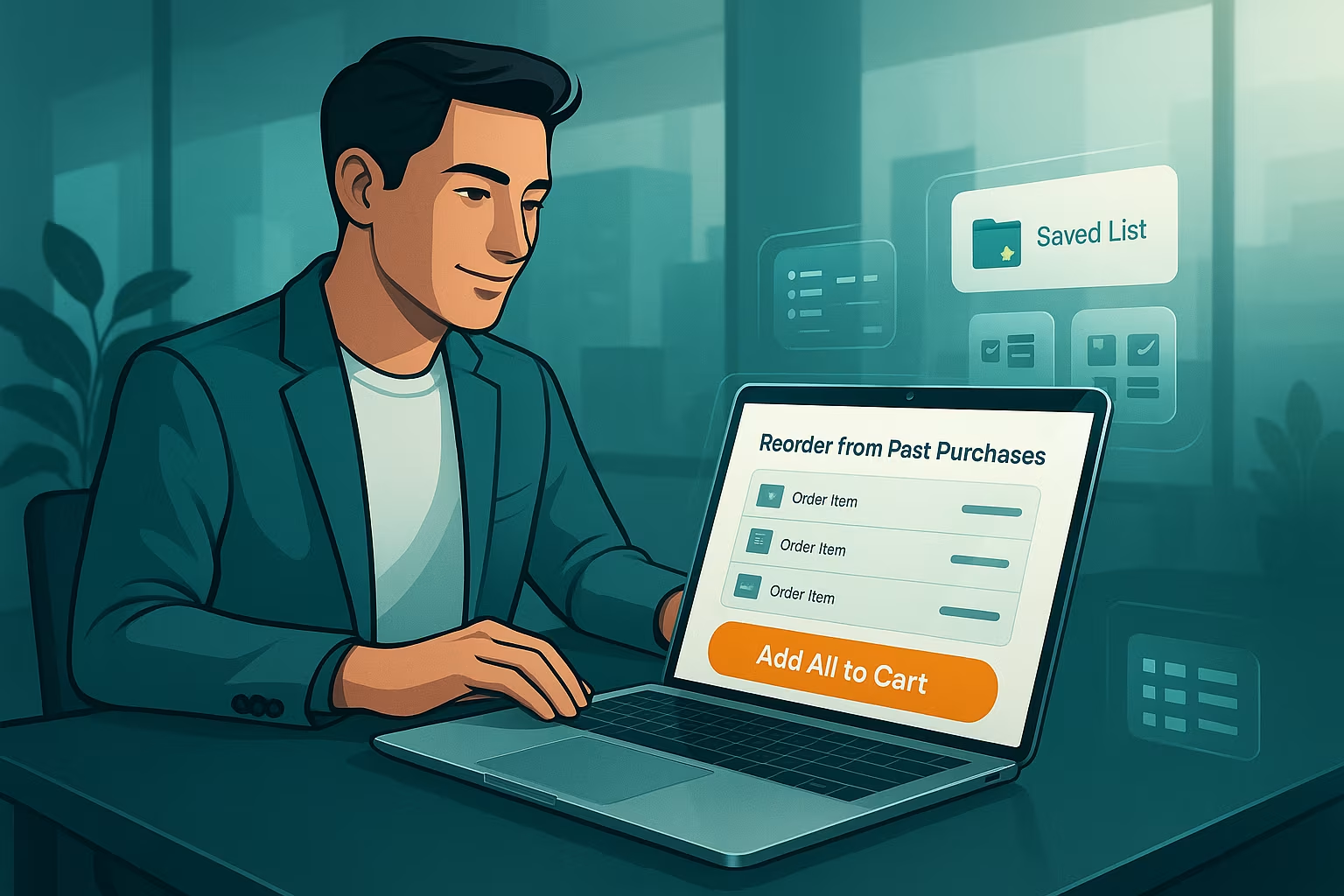
Additionally, we can integrate subscription or automatic reorder options for things like consumables. If a business knows they need the same 100 units of a material every month, let them set it and forget it – with the flexibility to modify if needed. All these enhancements show your customers that you understand their workflows. B2B buyers love efficiency, and providing tools for quick reorders is one of the best ways to earn their long-term business.
AI-Powered Recommendations and Insights
Part of bringing a B2C-grade experience to B2B is leveraging artificial intelligence for recommendations and decision support. This isn’t sci-fi future talk – it’s here now and can drive real value in B2B contexts. For instance, imagine an equipment supplier’s site that can suggest complementary products (cross-sells) or recommend a higher-grade item when appropriate (upsell), just like Amazon does with “Frequently Bought Together” or “You might also like…”. These AI-driven nudges can both increase average order value and help customers by surfacing relevant items they might have missed.
Kensium helps implement smart recommendation engines that learn from buying behavior. For example, if customers who buy Part A often also need Tool B, the system can automatically suggest Tool B in the cart or on the product page. Over time, the AI can even predict needs – e.g., “It’s been 30 days since your last order of Industrial Cleaner; would you like to reorder?” This kind of predictive reordering prompt uses past data to anticipate future demand, which busy professionals actually appreciate (one less thing for them to remember).
Another AI angle is using machine learning to personalize content. Say you have a wide catalog – AI can dynamically reorder products or highlight content based on what it knows about the visitor’s industry or past browsing. New visitor from the construction sector? Show the category menu with Construction products first. Returning user who frequently buys a certain supply? Highlight new arrivals or deals in that category on the homepage for them. This level of personalization at scale is possible thanks to AI analyzing behavior patterns.
The benefit is twofold: buyers discover more of your catalog (increasing cross-sell/up-sell, which boosts your sales), and buyers feel like the site “gets” them, reducing time to find what they need. Some studies have shown that effective product recommendations can account for 10-30% of ecommerce revenue (as seen in B2C), and while B2B is different, the principle holds. We’ve found that implementing these features can speed up ordering (customers find the right item faster) and even prompt customers to purchase items they initially forgot – saving them separate orders later. It’s about working smarter. And importantly, Kensium’s approach ensures the AI suggestions make sense in context; they’re informed by your actual sales data and business rules, so you won’t get off-base recommendations.
In short, AI isn’t just a buzzword – it’s another tool to enhance UX and drive conversions. B2B firms that start using AI recommendations now will be positioned as innovative and customer-friendly, much like early adopters of recommendation engines in B2C gained an edge.
When UX Improves, Conversions Follow
It’s worth emphasizing: a better user experience isn’t just for show – it drives real business results. We’ve seen this time and again. Improve the UX, and you’ll see higher conversion rates, larger orders, and even fewer support tickets (because customers encounter fewer issues). Let’s take a concrete example: Intelligentsia Coffee, which sells both B2C and B2B, overhauled its ecommerce experience to unify its catalogs and make the site more mobile-friendly and intuitive. The result? “A better purchase experience led to a 16% increase in mobile transactions, a 40% increase overall, and their conversion rate increased by 20%.” business.adobe.com. In other words, a 20% boost in conversions just by improving UX – that’s huge.
We at Kensium help our clients quantify these gains. Before any project, we benchmark metrics like bounce rates, cart abandonment, average order value, and conversion rate. After a UX revamp, we monitor the same metrics. It’s not uncommon to see double-digit percentage improvements. Even a modest lift in conversion rate can translate to millions in added revenue for a mid-size B2B supplier. And beyond raw sales numbers, consider the customer lifetime value impact: a satisfied buyer is more likely to become a repeat buyer and an advocate for your brand. UX improvements also tend to reduce support costs – for example, if the site clearly shows inventory and order status, customers don’t need to call your team to ask.
We use analytics and heatmaps to continually optimize the experience post-launch. Maybe we find that a certain step in checkout is causing drop-off – we’ll tweak it and test again (A/B testing is another practice we bring in from the B2C world). The work doesn’t stop at launch; optimization is ongoing, and we guide clients in a data-driven approach to UX enhancements. The end result is an ecommerce storefront that isn’t just pretty, but highly effective at turning visitors into buyers and buyers into loyal customers. When someone in your organization asks, “Why invest in UX?”, you’ll have the numbers to answer them.
Kensium’s B2B UX Overhaul Methodology
You might be thinking: This all sounds great in theory, but how do we implement it without disrupting our complex B2B operations? That’s where Kensium’s methodology comes in. We don’t just slap B2C features onto a B2B site and call it a day. We take a holistic approach that considers your unique workflows, integrations, and industry requirements.
First, we work with you on strategy – understanding your buyers, their journey, and pain points. A manufacturer selling via distributors has different UX needs than a wholesaler selling to small businesses, for example. We map out the user flows and identify opportunities where a UX fix will have the most impact (e.g., maybe your search is fine but your checkout is a bottleneck, or vice versa).
Next, we ensure technology alignment. Many B2B UX challenges arise from back-end systems – perhaps your ERP requires certain info or your data is siloed. We are experts at bridging the gap between your ecommerce front-end and enterprise back-ends. Whether you run on Acumatica, NetSuite, Salesforce CRM, or other systems, we’ve likely integrated with it before. Our team builds connectors and uses middleware where needed so that data flows seamlessly without slowing down the front-end. For example, our integration might allow your website to pull real-time credit status or contract pricing from Acumatica and display it to the user in milliseconds. (In fact, Kensium offers ready-made connectors for platforms like Acumatica to Adobe Commerce and BigCommerce, precisely to facilitate this kind of smooth integration.)
Importantly, we don’t make the user adapt to the system – we make the system support the ideal user experience. A mistake some companies make is letting the ERP dictate the UX (“that’s just how our system works”). Our philosophy is the opposite: define the optimal UX, then configure or extend the systems to enable that. If your current software stack can’t support a needed feature, we’ll tell you and help find a way (or a suitable workaround). As Shopify’s B2B report aptly noted, too many businesses end up with sites that are “little more than a reflection of their ERP’s logic… forcing buyers to navigate according to the ERP’s take on how people buy, which is often not how people actually shop.” shopify.com We ensure you avoid that pitfall. The user interface will be crafted for usability first, and through custom development we’ll translate between that UI and your back-end rules.
Finally, we rigorously test everything – not just QA for bugs, but actual user testing with scenarios (e.g., a new customer vs. a repeat customer, different buyer roles, mobile vs desktop). We’ve seen all the common B2B UX blunders and make sure you don’t fall into them. Our methodology often involves rolling out changes in phases and gathering user feedback. Because at the end of the day, your customers will vote with their clicks and their dollars. Kensium’s job is to make sure those votes go in your favor by delivering a site that is both beautiful and functional.
Watch Out for These Common UX Pitfalls

Through years of B2B ecommerce experience, we’ve learned there are a few common pitfalls that trip up projects. Here are some to watch out for (and that we help our clients avoid):
- Overloading the interface: It’s tempting to pack your customer portal or product pages with every piece of data and widget possible. Don’t. Clutter confuses users. We strive for a clean design that shows essential info but hides or tucks away the rest.
- Ignoring mobile users: As discussed, treating mobile as an afterthought is a big mistake. Ensure your design is responsive and that you’ve simplified workflows for small screens (e.g., shorter forms, larger touch targets).
- Forgetting about user roles/permissions: B2B sites often have different types of users (buyers, approvers, admins). Make sure your UX accounts for what each role should see and do. A common error is showing options to a user who then gets “access denied” – that’s poor UX. We implement proper role-based views from the start.
- Failing to test real user flows: Internal teams might assume the site is easy, but real customers might hit snags you didn’t anticipate. We always recommend usability testing or at least a pilot with a few customers. Watch how they actually use the site and be ready to iterate.
By being mindful of these pitfalls, you can save a lot of headache. Kensium’s experience means we’ll warn you early – for instance, if you’re asking to add a tenth filter to a search page, we might suggest a better way to present that much data. Our goal isn’t just to deliver what’s asked, but to ensure the final product truly works for the end-users.
Simplicity with Power: Hiding Complexity Under the Hood
A guiding mantra for us is “Simplicity on the surface, power underneath.” Your site can have extremely sophisticated capabilities, but the user shouldn’t need a training manual to use them. We aim to make the default experience simple and obvious. For example, a buyer shouldn’t need to know that your pricing comes from three different systems and changes based on quantity and customer segment – they should just see the correct price after they enter a quantity. Achieving that might be technically complex, but that complexity is our problem, not the user’s.
One way we do this is through smart defaults and progressive disclosure. The interface might show basic options up front, with advanced options hidden under an “Advanced” toggle or in an account settings area. The idea is, a new or infrequent user can accomplish the main tasks easily, while power users who need more control can find it when needed. We also focus on performance – enterprise systems can be slow, but we implement caching and optimize queries so that pages load fast and interactions feel snappy. A sluggish UI makes complexity more painful, so performance tuning is a part of UX for us.
Another aspect is error handling and guidance. In B2B, errors might happen (e.g., ordering above available credit, or a part incompatible with a previously ordered item). A bad UX would just throw an error code. A good UX (which we build) catches issues and explains them in plain language, possibly even suggesting a resolution. For instance, “You’ve entered a quantity above your credit limit. Submit anyway for approval, or adjust quantity.” This way, even when complexity leads to a roadblock, the user is guided on next steps rather than hitting a dead end.
Ultimately, intuitive design that masks complexity leads to higher user adoption. We’ve heard from clients that after redesigning their B2B portal with simplicity in mind, they saw far more customers migrating from phone/fax ordering to the online system – because it was finally easier than the old way. That’s a big win: migrating customers to e-commerce lowers your cost-to-serve and provides all the data benefits of digital. So we take that mission seriously: deliver all the power users need, but in a way that feels simple and elegant.
Sales Reps Are Still Key – Just Digitally Enabled
Improving your ecommerce UX doesn’t mean you’re sidelining your sales team. In fact, the best B2B strategies blend online and offline, empowering sales reps to focus on high-value activities while routine orders flow through digital channels. We recognize that relationships matter in B2B. Rather than view ecommerce as competing with sales reps, we see it as a tool for sales reps and customers to collaborate.
Kensium can help you create dedicated portals or features for sales reps to support their customers. For example, a rep might have the ability to log in as their client to create a draft order or quote which the client can then review and finalize online. We can build quote management workflows where reps and buyers negotiate pricing in a private portal area – the rep could put up a special discounted quote, and the buyer can log in and convert it to an order with one click. This marries the personal touch of a salesperson with the efficiency of an online transaction.
Additionally, communication tools can be integrated. Think about an embedded chat or messaging system on the portal where a buyer can ask their rep a question in context (e.g., on a product page: “Is this item compatible with X?”). The rep gets notified and can respond through the platform, creating a record of that Q&A for the customer’s future reference. Role-based visibility is another crucial element: we ensure that reps can see their customers’ activity (orders placed, etc.) so they have full insight. It’s like giving your sales team a cockpit view of their accounts’ online engagement, enabling them to step in when needed or identify opportunities (e.g., if a customer’s cart is abandoned with a high-value item, a rep could reach out proactively to assist).
The reality is, many buyers prefer to self-serve for standard orders, but they still want their rep available for complex or bespoke needs. By digitally enabling your sales reps, you free them from order-taking and allow them to focus on consulting, relationship-building, and solving problems – the things that truly add value. Your ecommerce site, in this vision, becomes a shared platform where both buyers and reps can collaborate. This not only leads to more sales (because reps have more time for outreach and upselling rather than data entry), but it also strengthens the customer relationship by providing multiple channels to interact. In a sense, we’re bringing your offline relationships online, so customers get the best of both worlds: convenience when they want it, and human help when they need it.
Integrating ERP and CRM Without Breaking UX
A major challenge (and our specialty) in B2B UX projects is integration. Your ecommerce front-end must play nicely with systems like ERP (for orders, inventory, pricing), CRM (for customer data), PIM (product info), and more. The key is doing this without compromising the user experience. We’ve all seen sites where obviously the tech shows through – e.g., error messages straight from the ERP, or a UI that looks like it was designed by engineers rather than UX designers. Kensium avoids that by acting as the glue between systems, so the front-end can remain user-centric.
For one, we utilize APIs and middleware to ensure data flows in real time (or near real time) where needed. For example, if your site needs to display contract pricing from NetSuite, we set up a secure API call to fetch that pricing when a user logs in, and cache it appropriately. The user just sees their price; they don’t know or care that it came from NetSuite in the background. Similarly, when an order is placed, we make sure it’s automatically recorded in your ERP, updating stock levels, generating an invoice, etc., without any manual intervention. From the user’s perspective, they place an order and get a confirmation – they assume your system just works (as they should). And indeed, behind the scenes, everything is updated cleanly.
We’re experienced with systems like Acumatica (Cloud ERP) and have even developed products like our Acumatica connectors for BigCommerce and Adobe Commerce kensium.com, which provide pre-built integration for common data flows (customers, orders, inventory, payments). We know the quirks – for instance, how to handle complex tax or shipping calculations by letting the ERP do it, but returning the result to show the user instantly. Or syncing customer-specific payment terms and credit limits so that an order can be placed on account appropriately. One of our guiding principles is “don’t break the UX when integrating.” That means we handle errors gracefully (if the ERP is momentarily down, the site might queue an order rather than crash on the user) and we never expose technical jargon to the customer.
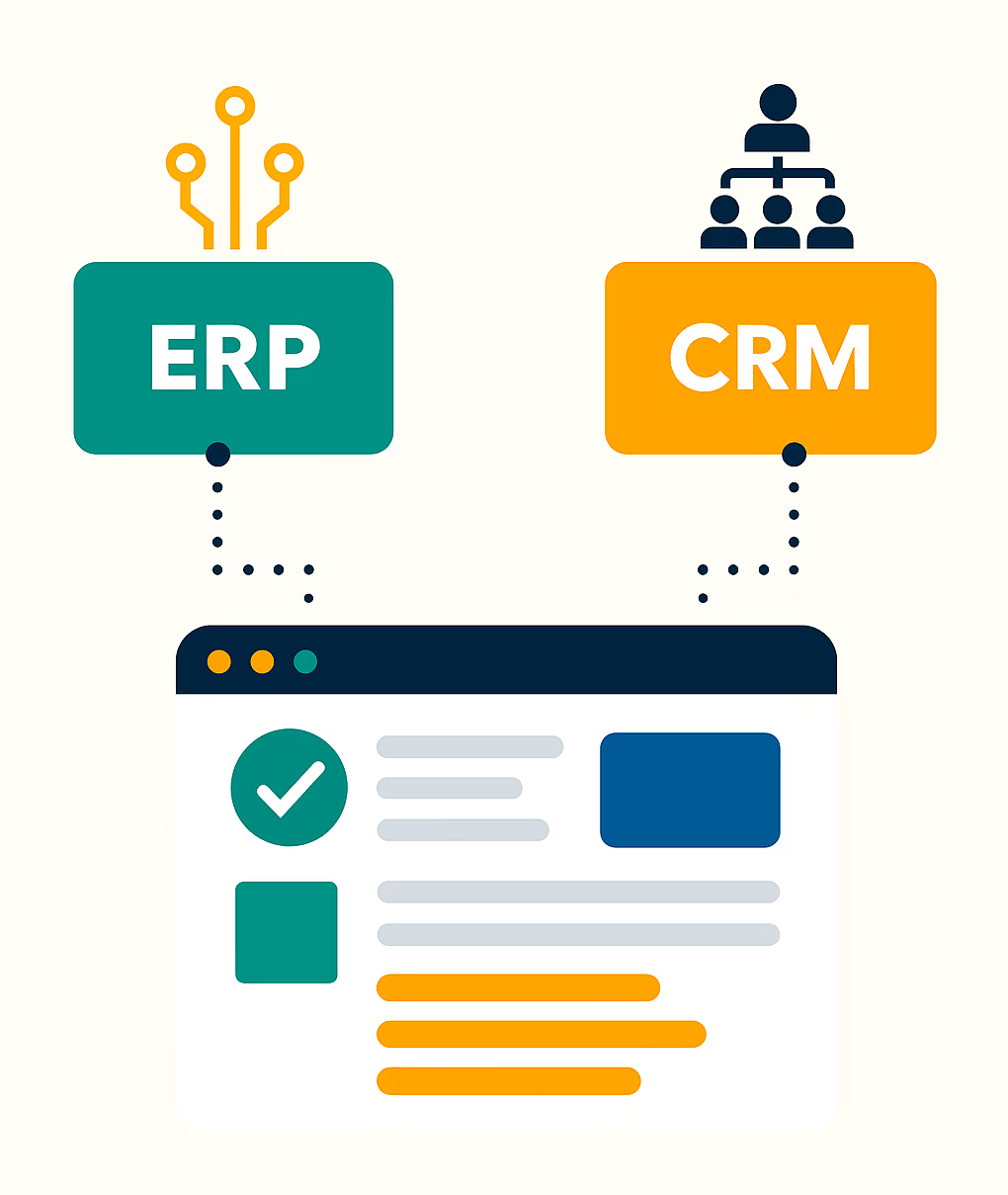
Integration isn’t just a tech project, it’s a UX project. A great example is what Shopify’s B2B lead wrote: many companies just present a bare-bones ERP interface to customers and expect them to cope, which is not acceptable anymore shopify.com. Instead, we leverage the power of back-end systems behind a user-friendly layer. The result is a unified, seamless experience – your customer can place an order, and your internal teams see it in their systems with no extra work. We often hear from clients post-integration that their internal efficiency improved alongside customer satisfaction, because now there’s a single source of truth and no double entry. When done right, integrated UX means everyone – buyers, customer service, fulfillment, finance – is in sync, and the website becomes a true extension of your enterprise rather than a standalone silo.
What’s Next: The Future of B2B UX
Even as we implement the current best practices, we keep an eye on emerging trends that will shape B2B UX in the coming years. The future is exciting, and Kensium is already experimenting with and adopting these technologies so our clients can be ahead of the curve:
- Voice Commerce: With the rise of voice assistants, we foresee B2B buyers wanting to reorder or check order status via voice commands (imagine a procurement manager saying, “Reorder item 1234” into a smart device). Voice interfaces could streamline hands-free scenarios, and we’re tracking developments in voice search optimization for B2B catalogs.
- Visual Configuration & AR: For complex products, visual configurators (with 3D models) allow buyers to configure a product to specs and see it in real-time. Augmented reality (AR) product previews can help, say, a machinery buyer visualize how a piece of equipment would fit in their facility. Some B2C furniture and industrial companies are already using AR; B2B will follow for high-stakes purchases.
- AI Chatbots & Virtual Assistants: Beyond just static site search, AI bots can assist B2B buyers by answering technical questions or guiding them through product selection. Modern AI (with GPT-style models) can even handle nuanced queries like, “Which of these parts is heat-resistant and compatible with machine X?” and provide a helpful answer. We see AI assistants becoming a standard part of B2B sites for both support and sales.
- Personalization 2.0: As data accumulates, B2B sites will get even better at predicting needs. We anticipate more predictive ordering (the system reminds you when it’s time to reorder based on usage patterns) and tailored content streams (articles, how-tos, and training relevant to the products you own).
- Omnichannel and Marketplace Integration: B2B buyers might find you through marketplaces (like Amazon Business, Alibaba, etc.) or transact across channels. The future UX needs to account for a seamless experience whether they buy direct or via a marketplace. Ensuring consistent pricing, availability, and branding across channels will be a UX challenge and priority.
- Security and Trust UX: With cyber threats rising, expect UX to also focus on conveying trust – from more visible security badges, two-factor authentication options for logins, to secure account delegation features. The trick will be balancing security with convenience (e.g., biometric logins could make it both secure and easy).
Kensium is actively prototyping many of these future-forward features in our labs. We want our clients to be future-ready, not just up-to-date. That means when voice or AR or the next big thing becomes a differentiator in B2B, you’ll already have a path to leverage it. We stay closely aligned with platform roadmaps (Adobe, BigCommerce, Shopify, etc.) and tech partners to bring innovation into your storefront as soon as it makes sense for your business.
Ready to Rethink Your B2B Storefront?
The evidence is overwhelming: UX is no longer just part of the ecommerce experience – it is the experience. In B2B, where competition is intensifying and buyers’ expectations are rising by the day, providing a modern, seamless online journey is critical to retaining and growing your customer base. The good news is that by adopting the UX fixes and approaches proven in D2C, you can leap ahead of competitors still stuck in the old mold. Faster pages, smarter search, easier checkout, personalized content, integrated systems – these aren’t just “nice features,” they are sales multipliers and relationship builders.
At Kensium, we combine strategy, design, and technology to deliver B2B ecommerce solutions that elevate your brand and make life easier for your customers (and your internal teams). Whether you need a full-scale platform implementation or targeted UX improvements on your existing site, our team has the deep expertise to make it happen. We’ve helped countless businesses transform clunky websites into high-performing sales engines, and we’d love to do the same for you.
Don’t let an outdated online store undermine all the hard work you’ve put into your products and services. It’s time to close the UX gap and give your B2B customers an experience on par with the best consumer websites – one that delights users, boosts conversions, and builds loyalty. Ready to get started? Let’s transform your ecommerce journey.








.png)








